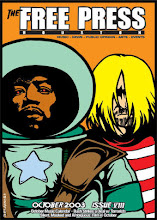Linus Roache appears at RO3 Friday night

Free Press Houston spoke by phone to Linus Roache last week regarding his starring role in Before the Rains. Roache will be familiar to viewers of Law and Order (Michael Cutter) or as Christian Bale’s dad in Batman Begins but those are his mainstream roles. In fact, as a child in the 70s Roache appeared in Coronation Street, a British soap opera that stars his father William Roache. “I was only on a couple of episodes,” recalled Roache, “But my dad has starred on the show since 1960.” Coronation Street is the longest running BBC soap and still airs.
The lavish drama of Before the Rains takes in the political atmosphere of India during the late 1930s, a full decade before its independence. “The scenery speaks for itself, “ noted Roache about the locations in Kerala, which is in the south of India. “This part of India feels unspoiled, there isn’t the harshness of poverty you find in the north.”
Roache plays plantation owner Henry Moores whose Indian mistress has gone missing. Moores’ go-between, T.K. (played by Indian rugby player turned movie star Rahul Bose) has been accused of her disappearance. Director Santosh Sivan observes the distance between T.K. and Moores as men while slyly commenting on Indian patriarchy. Jennifer Ehle and Nandita Das also star.
“The director specifically went for an authentic feel,” said Roache about the contemporary mood the film evokes. Before the Rains pull a switchback on the audience and before you know it you're on the side of either Moores or T.K. as fate pits them against one another.
Roache has also appeared in Wings of the Dove and Pandaemonium where he played Samuel Coleridge. One role that he found “life changing” was playing Robert Kennedy in the TV movie RFK from 2002. Before the Rains is currently playing exclusively at the River Oaks Three. Roache will make a personal appearance at the RO3 Friday, May 23.










